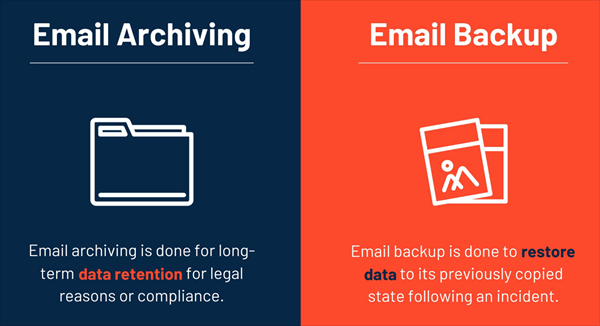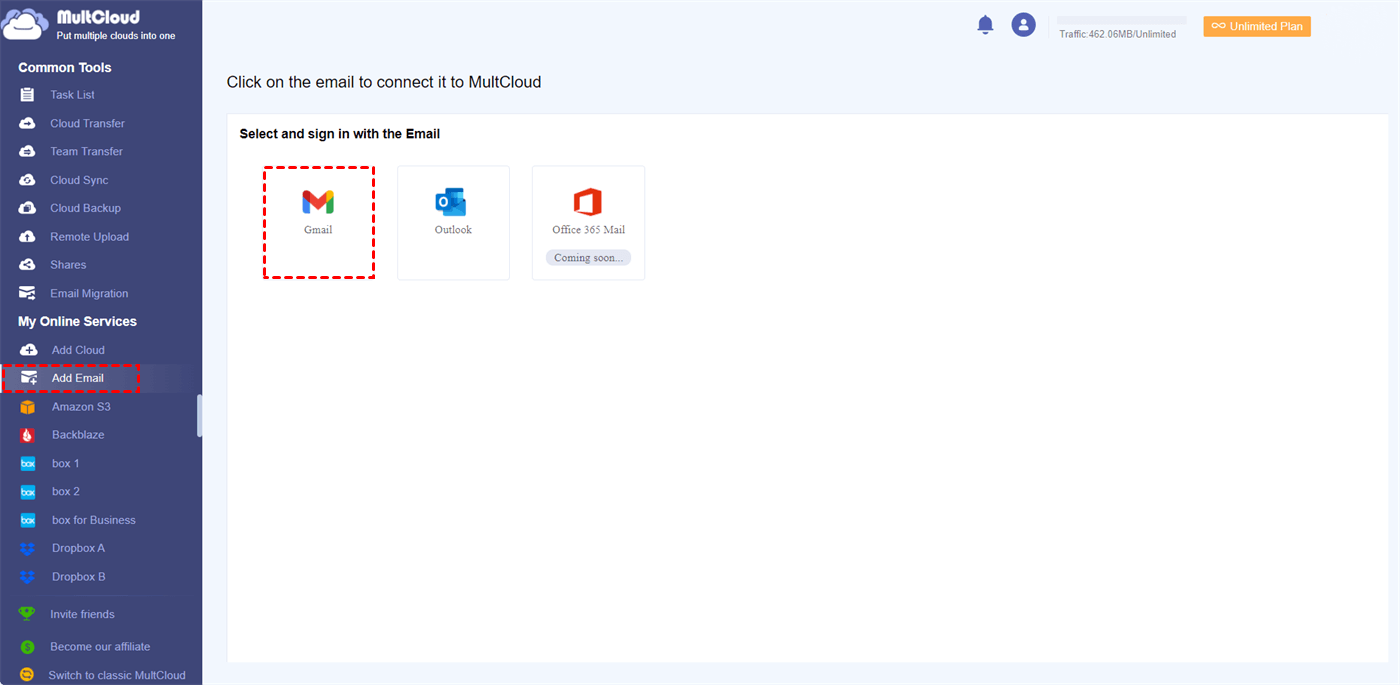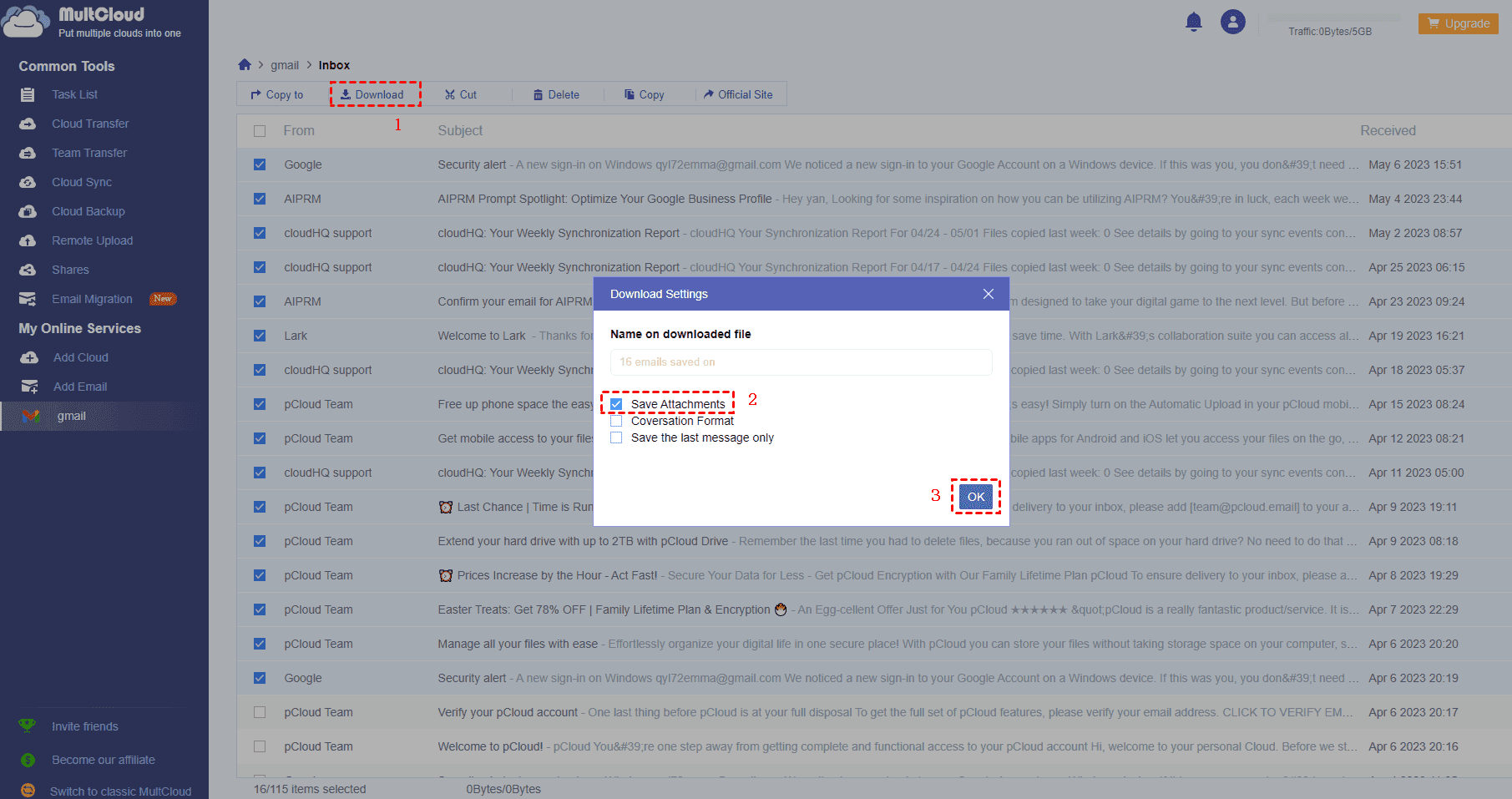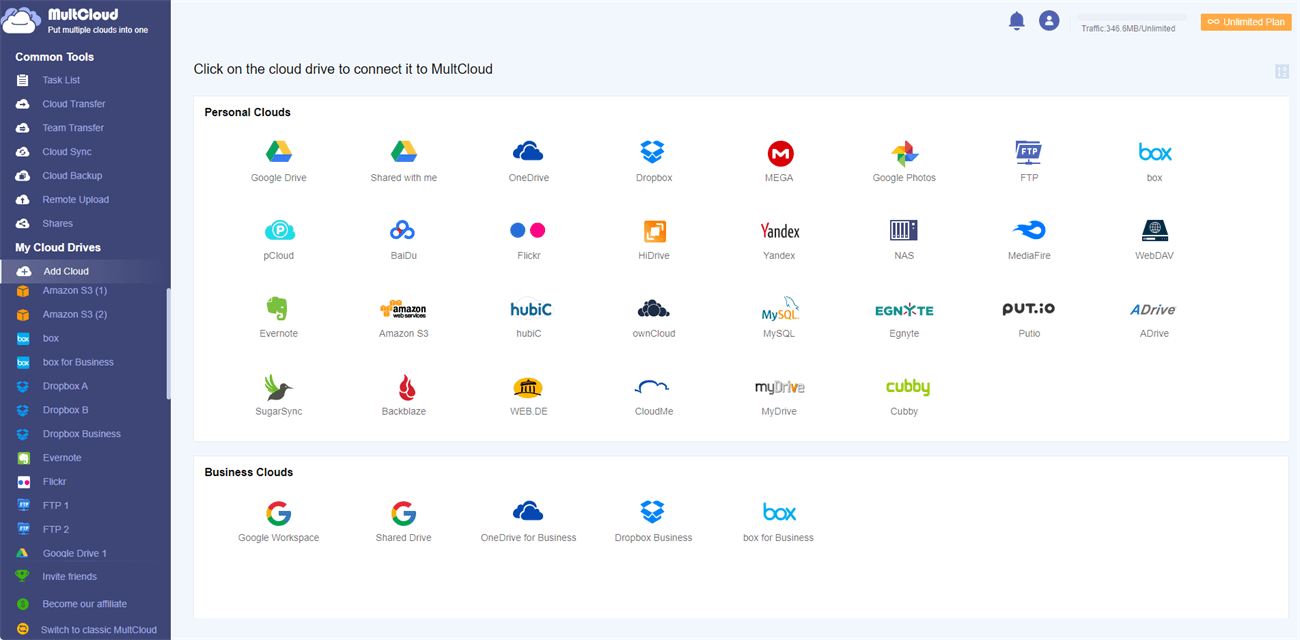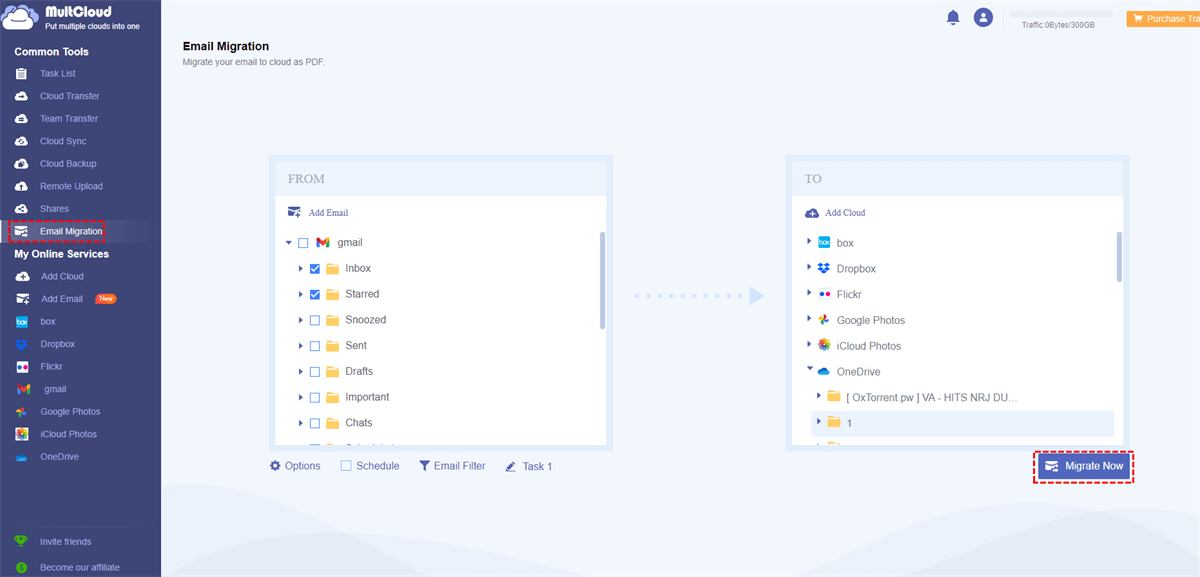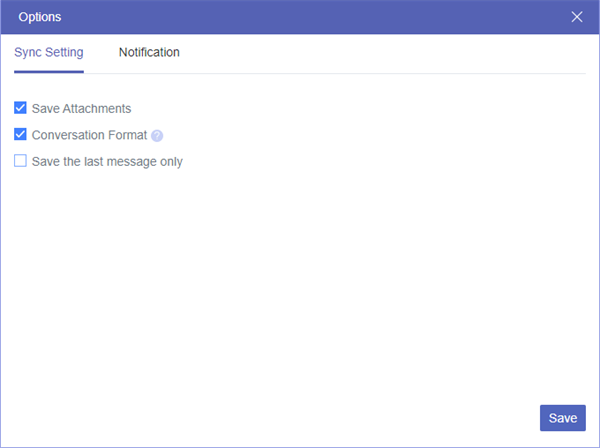Email Archiving vs Backup: Overview
With a mind-boggling amount of data generated each day, knowing how to manage it becomes an essential skill. This is especially true for emails, the linchpin of many business operations. Let's dive deep into the world of email data management. We'll shed light on the difference between email backup and archive Gmail or Outlook. Additionally, we'll introduce MultCloud, an innovative solution that simplifies the process of email management.
What is Email Archiving?
Email archiving refers to the practice of systematically preserving and storing email messages and attachments for long-term access. It involves creating a separate, secure repository for storing emails, typically in a compressed and indexed format. This approach ensures that important emails are retained, whether stored in a user's mailbox or deleted.
What is Email Backup?
Picture this—you're working on an intricate art piece (an email), and your mischievous cat (read: accidental deletion) ruins it. Horrifying, right? Well, an email backup is your safety net, your replica of the original. It's like a painter's rough sketch, saving you from having to start from scratch. It's a safety net, catching you when accidental deletions, data corruption, or loss threaten your day.
Email Archive vs Email Backup: Key Differences
While email archiving and backup share the common goal of preserving email data, they differ in several key aspects. Understanding these differences is crucial for determining the most appropriate solution for your specific needs.
Email Archive vs Email Backup: Purpose and Function
Email Archiving is to preserve emails for the long term, making them easily searchable and retrievable in the future. This is often necessary to meet legal, compliance, and business record-keeping requirements. Besides, Email archiving systems typically categorize, index, and store emails in a dedicated archiving system, allowing users to quickly search for and access past emails.
On the other hand, Email Backup aims to protect against data loss and enable recovery in case of data loss, damage, or accidental deletion. In one word, backups are mainly used for data protection and disaster recovery. Email backup systems periodically copy all email data and restore it to a specific point in time after a disaster or data loss.
Email Backup vs Archive: Storage Structure
Email archiving typically employs a hierarchical storage system, allowing for efficient scalability and optimization of storage resources. On the other hand, email backup often utilizes incremental or differential backups to reduce storage space requirements and minimize backup time.
Email Backup vs Archive: Retrieval and Usage
Email Archiving provides advanced search functions, allowing precise retrieval based on various criteria such as time, sender, and keywords. The users can easily access archived emails through a dedicated interface.
Email Backup is mainly used to restore the entire email system or a specific user's mailbox, not offering granular search and access functions. Restoring emails from a backup is usually a one-time process, primarily intended for disaster recovery.
Email Backup vs Archive: Data Retention and Preservation
Email Archiving save email data for a long-term, ranging from several years to even longer, depending on legal requirements and company policies. Archived emails are usually immutable so that the data can remain integral and compliant.
Email Backup save email data for a short-term, from a few days to a few months, to ensure the availability of the latest backup for recovery. Backup data can be modified, allowing old backups to be overwritten to maintain the most recent ones.
Overview of Other Key Difference between Email Archive and Backup
| Email Archive | Email Backup | |
|---|---|---|
| Remove mailbox limitations | Yes | No |
| Eliminate PST files | Yes | Partially |
| Lessen the burden on email servers and streamline backup and restoration procedures | Yes | No |
| Minimize storage needs by implementing deduplication and compression techniques | Yes | Partially |
| Offer comprehensive, tamper-proof, and extended-term email preservation | Yes | Partially |
| Aids in fulfilling compliance obligations | Yes | Partially |
| Support for eDiscovery situations | Yes | Partially |
| Indexing emails for rapid full-text searches | Yes | Partially |
| End users can swiftly and effortlessly recover lost emails | Yes | Partially |
Email Archiving vs Backup: Benefits
In essence, both email backup and email archiving solutions play a crucial role in safeguarding a company's essential data, ensuring that this valuable information remains accessible over the long term. Nevertheless, since these solutions have distinct functionalities, it's essential to grasp when and how to appropriately deploy each of them.
Benefits of Email Archiving
Email archiving offers benefits both for individuals and organizations.
- Firstly, it improves email server performance by reducing the load on the primary mail system.
- Moreover, email archiving facilitates efficient storage management by freeing up storage space and optimizing email system performance.
- Additionally, email archiving enhances productivity and collaboration by allowing users to quickly locate important information through searching and retrieving.
Benefits of Email Backup
Email backup provides several advantages for your email management.
- Email backup provides point-in-time recovery. This means that users can restore their email data to a specific point in time, allowing them to recover messages and attachments as they existed at that moment.
- Furthermore, email backup offers flexibility in terms of storage options. Users can choose to back up their emails to local devices, external hard drives, network-attached storage (NAS), or cloud storage platforms.
Email Archiving vs Backup: Conclusion
In simple terms, an email backup involves making a duplicate of your email database to ensure quick retrieval in case of any issues, whereas an email archive involves capturing your email data and storing it in a structured database that allows you to easily access specific information.
In essence, an archive serves a similar purpose as a backup, but it offers a higher level of searchability and organization. Conversely, backups lack the comprehensive search capabilities and indexed storage that archives provide.
Email Archiving vs Backup: Combine for Comprehensive Email Management
While email archiving and backup have distinct purposes, they complement each other in achieving comprehensive email management. Implementing both solutions ensures that organizations have a robust strategy for data preservation, compliance, and disaster recovery.
By combining email archiving and backup, organizations can meet legal requirements, maintain data integrity, and safeguard against various risks. This comprehensive approach empowers users with the ability to access historical emails, recover lost data, and ensure the continuity of critical business operations.
Pro Tip: How to Backup Gmail and Outlook Emails Properly
Instead of using email backup or email archiving to protect your emails against data loss, you could also use some third-party services to bulk backup your emails to a cloud drive or your local device for double protection. Among all these services, MultCloud could be a great one that offers a secure web interface for managing all your clouds and emails in one place.
The new features that MultCloud publishes, Email Download and Email Migration, could give you great help in backing up your emails as PDFs and transferring them along with attachments to your computer or your clouds.
Part 1. Email Download: Backup Email to Local Storage
Step 1. Create a MultCloud account on the official website.
Step 2. Click “Add Email” and choose Gmail or Outlook to log in.
Step 3. Open your email account in MultCloud, select your emails that you want to backup to your local device, then click "Download" in the feature bar.
Step 4. MultCloud offers many help options for you to set up. You can choose the PDF format you need and name the converted PDF files. Then just select a place to store your email backups and let MultCloud backup your emails to computer.
Part 2. Email Migration: Backup Emails to Cloud Storage
Step 1. After getting a MultCloud account and adding your email account to it, click “Add Cloud” and choose a cloud that you want to back up your emails to. Then log in to that cloud to add it to MultCloud.
Step 2. Here we take backing up Gmail to OneDrive as an example. Open the Email Migration feature from the left, choose emails in Gmail as the source, and choose a place in OneDrive as the destination. Then just click “Migrate Now” and your selected Gmail emails will be converted to PDFs and saved to your OneDrive account as soon as possible.
Email Migration Options:
- Save Attachments: Your email attachments can also be saved to your clouds.
- Conversation Format: All messages in one email conversation will be collected together without repeated references.
- Save the Last Message Only: Only the last message of an email conversation will be backed up.
In the End
Email archiving and backup are two vital components of effective email management. According to the above email archiving vs backup comparison, while email archiving focuses on long-term storage, compliance, and efficient retrieval, email backup safeguards against data loss and enables quick recovery. By implementing both solutions, organizations can ensure comprehensive email data management, compliance with regulations, and business continuity.
In addition to email archiving and backup, tools like MultCloud further simplify the management of multiple emails and cloud storage accounts, facilitating seamless file transfer and reducing complexity. For example, you can easily realize Dropbox Gmail integration through the Email Migration function of MultCloud.
FAQs about Email Archive and Email Backup
Is archiving the same as backing up?
No, email archiving is not the same as backing up, although both processes involve storing email data. They serve different purposes and have distinct characteristics.
What is the key difference between email archiving and email backup?
The primary distinction is that email archiving focuses on long-term storage, searchability, and compliance, whereas email backup is primarily designed for disaster recovery and short-term data retention.
Why should I consider email archiving for my organization?
Email archiving helps you maintain a comprehensive and searchable record of emails for compliance, legal purposes, and efficient data retrieval, making it ideal for businesses that need to retain email data for an extended period.
Can email archiving and backup solutions be used together?
Yes, many organizations use both email archiving and backup solutions to ensure comprehensive data management. Email backup ensures data recovery, while archiving ensures data retention, searchability, and compliance.
Is email archiving more resource-intensive than email backup?
Yes, email archiving may require more resources due to its advanced features like indexing, searching, and long-term storage. However, the resource investment is often justified by the benefits it offers in terms of compliance and data management.
How can I ensure data security in both email archiving and backup solutions?
Implement strong access controls, encryption, and regularly update security measures to protect sensitive data in both email archiving and backup systems.
MultCloud Supports Clouds
-
Google Drive
-
Google Workspace
-
OneDrive
-
OneDrive for Business
-
SharePoint
-
Dropbox
-
Dropbox Business
-
MEGA
-
Google Photos
-
iCloud Photos
-
FTP
-
box
-
box for Business
-
pCloud
-
Baidu
-
Flickr
-
HiDrive
-
Yandex
-
NAS
-
WebDAV
-
MediaFire
-
iCloud Drive
-
WEB.DE
-
Evernote
-
Amazon S3
-
Wasabi
-
ownCloud
-
MySQL
-
Egnyte
-
Putio
-
ADrive
-
SugarSync
-
Backblaze
-
CloudMe
-
MyDrive
-
Cubby
